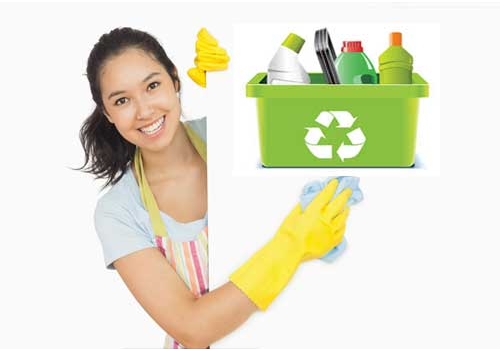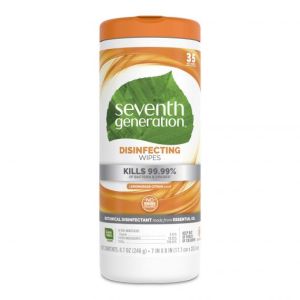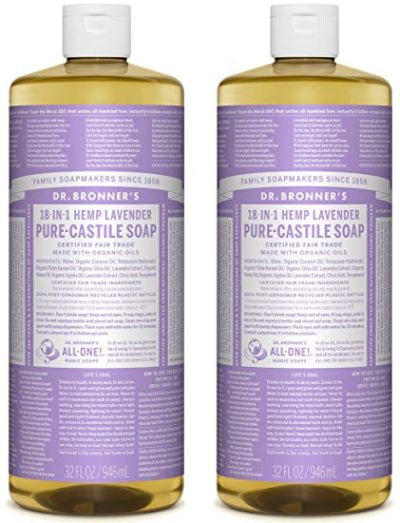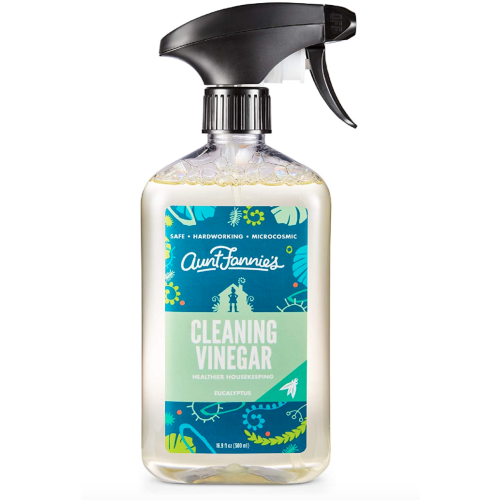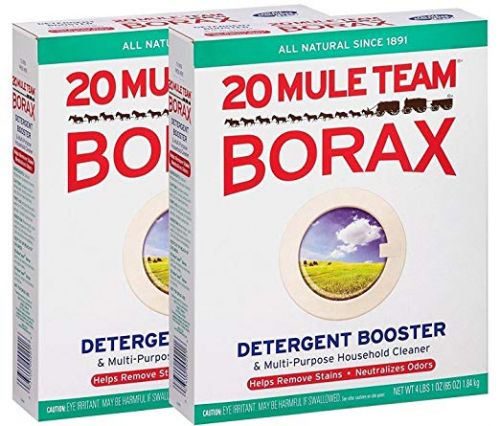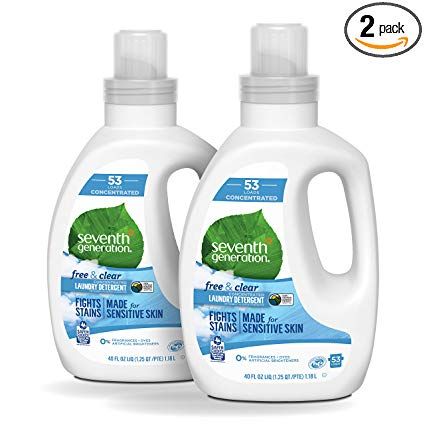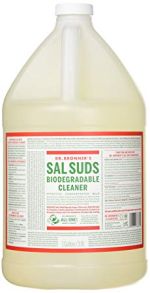Although the United States FDA and national agencies in other countries strictly control what drugs can be offered to consumers, other consumer products, including cosmetics and cleaning products, are largely unregulated. Some of the thousands of chemicals currently used may be toxic when touched or inhaled, so you may wish to opt for environmentally-friendly, non-toxic alternatives.

Toxic: Chemical Fragrances
Air fresheners, dryer sheets, and scented products like soaps and laundry detergents are often the source of much of a home’s airborne toxins. Perfumes used in these products often contain phthalates, such as DEHP (diethylhexyl pthalate), DEP (diethyl phthalate), and DBP (dibutyl phthalate). Used as solvents, phthalates have a similar structure to estrogen and act as an endocrine disruptor, mimicking estrogen signaling in your body.1
Synthetic fragrances, particularly when used in air fresheners, are also a risk factor for asthma and allergies, including contact dermatitis. Certain compounds in these scents, such as geraniol, are known to cause allergies.2 Scented aerosol sprays are also associated with headaches, depression, ear infections, and diarrhea, particularly in children.3
Our Recommendation: Use Green Cleaning Products like Seventh Generation that do not have toxic chemical fragrances or use fragrance free products.

Safe: Herbal Fragrances
There are a number of naturally-occurring scents which are healthier to use than synthetic fragrances. These include familiar items that you might find at a natural grocer, like lavender, rosemary, and other herbs and fruits. The compounds limonene, from citrus fruits, and menthol, from mint, are generally safe, though like any plant product can cause allergies in some people.4,5
Our Recommendation: Use Green Eco-Friendly Products like Dr Bronners Green Cleaning Products that have safe herbal fragrances.

Toxic: Corrosive Drain Cleaners
Conventional drain cleaners, as well as oven and toilet bowl cleaners often contain strong acids and other highly corrosive chemicals such as sodium hydroxide and lye. The fumes from these compounds can cause severe eye, skin, and lung irritation, and can be fatal if ingested. These products are the most acutely or immediately toxic household products, and account for a significant proportion of accidental poisonings.6
Our Recommendation: Use a safe bacteria based drain cleaner such as Bio-Clean Drain Septic

Safe: Baking Soda and Vinegar

Toxic: Bleach and Ammonia
Bleach and ammonia are both highly toxic and corrosive, damaging skin that comes into direct contact with them and irritating lungs and eyes with their fumes. Mixing the two is especially dangerous: this can generate chlorine gas, the chemical warfare agent which destroys lung tissue.7
Our Recommendation: Instead of bleach and ammonia, try green cleaning solutions like the powerful Bon Ami Cleansing Powder.

Safe: Borax
Borax (sodium borate) has been used for various cleaning purposes for centuries. It can also be used as a barrier insecticide, as ants and cockroaches that crawl over powdered borax lose the integrity of their exoskeletons. It is not toxic to humans when used properly, and is mainly harmful only if consumed in large doses.8
Our Recommendation: Use green products for cleaning like Borax

Toxic: Conventional Detergents
Conventional detergents used for laundry and dishwashing often contain a number of undesirable compounds. Many contain solvents and surfactants that are derived from petroleum, as well as endocrine disruptors such as phthalates and bisphenol A (BPA). They may contain nitrates, a preservative which can give rise to carcinogenic nitrosamines when heated. Dishwasher detergent also sometimes contains phosphates, which are corrosive and also are responsible for toxic algae blooms when they are drained into local water systems.9
Our Recommendation: Instead of conventional detergents, try a green cleaning solution like Seventh Generation Detergent OR
Try the same conventional detergent without the harmful chemicals and fragrances Tide Free & Gentle Laundry Detergent

Safe: Plant-Based Alcohols and Oils
There are a great number of plant-based detergents and other cleaning products on the market. These use natural oils and alcohols derived from grains and other types of produce to generate emulsifying compounds that achieve the same desired effect as petroleum-based and other synthetic chemicals.
Our Recommendation: Use green cleaning products like DR Bronners Sals Suds.

Green Cleaning Product Companies
[1] Dodson RE, Nishioka M, Standley LJ, Perovich LJ, Brody JG, Rudel RA. 2012. “Endocrine Disruptors and Asthma-Associated Chemicals in Consumer Products.” Environ Health Perspec. Jul; 120(7):935-943.https://www.ncbi.nlm.nih.gov/pmc/articles/PMC3404651/
[2] Gold MH. 2010. “Update on tissue tightening.” J Clin Aesthet Dermatol. May;3(5):36-41. https://www.ncbi.nlm.nih.gov/pmc/articles/PMC2922712/
[3]Jongeneel WP, Delmaar JE, Bokkers BGH. 2018. “Health impact assessment of a skin sensitizer: Analysis of potential policy measures aimed at reducing geraniol concentrations in personal care products and household cleaning products.” Environ Int. Sep; 118:235-244. https://www.ncbi.nlm.nih.gov/pubmed/29890471
[4]Edwards R. “Far from fragrant.” New Scientist. September 4, 1999. https://www.newscientist.com/article/mg16322022-700-far-from-fragrant/
[5]Sun J. 2007. “D-limonene: safety and clinical applications.” Altern Med Rev. Sep; 12(3):259-264. https://www.ncbi.nlm.nih.gov/pubmed/18072821
[6]Nair B. 2001. “Final report on the safety assessment of Mentha Piperita (Peppermint) Oil, Mentha Piperita (Peppermint) Leaf Extract, Mentha Piperita (Peppermint) Leaf, and Mentha Piperita (Peppermint) Leaf Water.” Int J Toxicol. 20 Suppl 3:61-73. https://www.ncbi.nlm.nih.gov/pubmed/11766133
[7]Grist. “How to clean your house without hurting the planet.” March 19, 2003. https://grist.org/article/possessions-cleaning/#ammonia
[8]Centers for Disease Control and Prevention. “Facts about Chlorine.” https://web.archive.org/web/20160423193302/http://www.bt.cdc.gov/agent/chlorine/basics/facts.asp
[9]Van Schagen S. “A test of eight green bathroom-cleaning products.” Grist. March 26, 2008. https://grist.org/article/i-dont-want-no-scrub/
[10]Woodford C. “Detergents and soaps.” Explain That Stuff! June 11, 2018. https://www.explainthatstuff.com/detergents.html
Search the blog
Article Categories
- All Articles (95)
- Rating Charts (1)
- Beauty & Skincare (17)
- FAQ (0)
- Hair Care (9)
- Health & Wellness (12)
- Anti-Aging (4)
- Kid's Health (0)
- Makeup (2)
- Men's Health (2)
- Oral Care (3)
- Sunscreen (7)
- Skin Tools & Treatments (10)
- Supplements (26)
- Videos (0)

